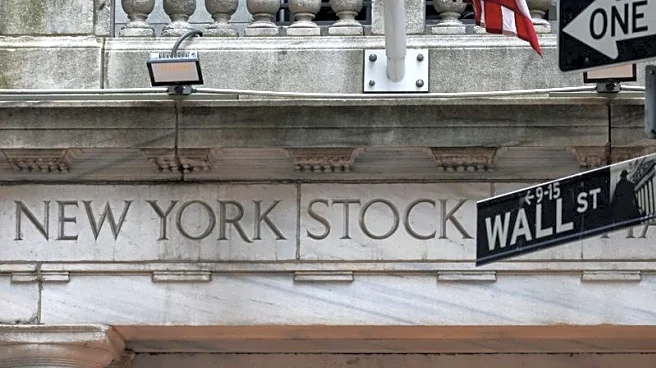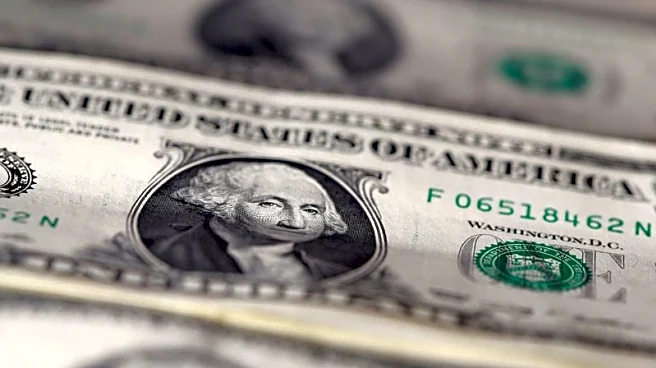What's Happening?
The U.S. dollar remained steady as investors speculated on the likelihood of the Federal Reserve cutting interest rates in December. Fed Governor Christopher Waller indicated that the weak job market might
justify a quarter-point rate cut, although further action would depend on upcoming data delayed by a government shutdown. This sentiment was echoed by New York Fed President John Williams, shifting market expectations towards a potential rate cut. Traders are now pricing in an 81% chance of a cut next month, up from 42% a week earlier. The dollar index, which measures the U.S. currency against major rivals, was at 100.2 in early trading. Meanwhile, President Trump highlighted strong U.S.-China relations following a call with Chinese President Xi Jinping, which could influence trade negotiations.
Why It's Important?
The potential rate cut by the Federal Reserve is significant as it reflects ongoing concerns about the U.S. economy, particularly the labor market and inflation expectations. A rate cut could stimulate economic activity by making borrowing cheaper, potentially boosting consumer spending and investment. However, it also signals caution about economic growth prospects. The strong U.S.-China relations could lead to progress in trade negotiations, impacting global markets and U.S. businesses reliant on international trade. The Federal Reserve's decision will be closely watched by investors and policymakers, as it could influence financial markets and economic policy.
What's Next?
The Federal Reserve will continue to assess economic data to determine the necessity of a rate cut in December. The delayed data due to the government shutdown will be crucial in shaping the Fed's decision. Market participants will monitor statements from Fed officials, including Chair Jerome Powell, for further insights into the central bank's policy direction. Additionally, developments in U.S.-China trade relations could affect economic forecasts and investor sentiment.













